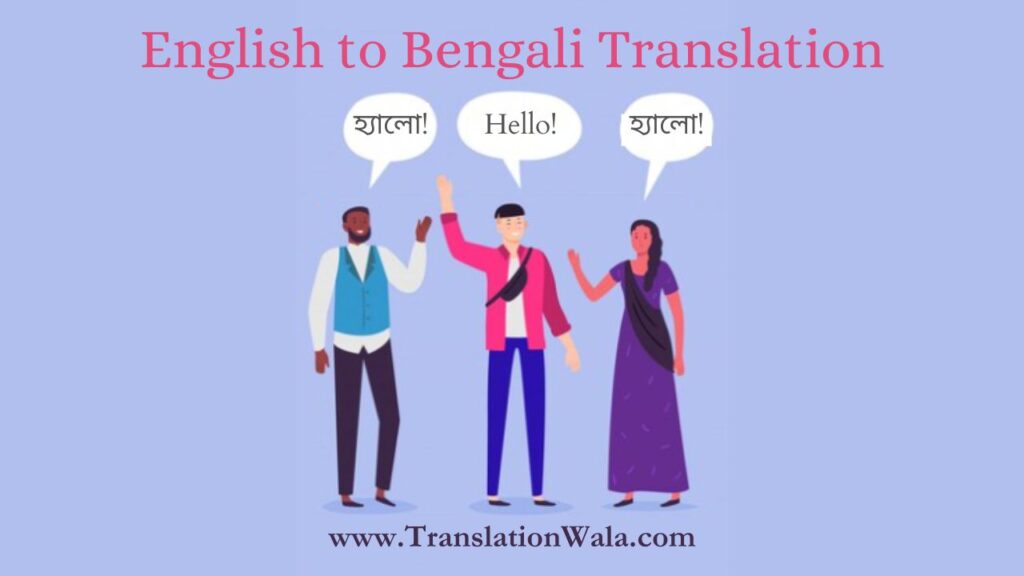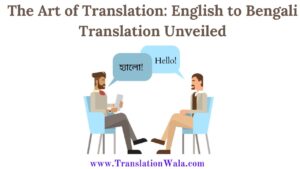Bengali literature has enchanted readers for hundreds of years, with its lively tunes in the Rabindra Sangeet, its moving lyrics by Michael Madhusudan, and its heartfelt writing by Bankimchandra Chattopadhyay. As the world becomes more linked, however, the need for easy contact between languages grows. And this is where the art of English to Bengali Translation really shines.
Bridging the Gap: The Power of Effective Translation
Imagine that important materials, like medical and educational books, are kept locked away in English so that the large Bengali-speaking people can’t get to them. Or think about how an interesting English book would lose its core in a bad translation. This is where good interpreters really shine. They become language messengers who help people of different cultures and languages communicate with each other so that information and speech can cross boundaries.
More Than Words: Mastering the Nuances of Translation
However, translation is more than just switching words around. It’s a fine line between being exact and being creative, and the goal is always to keep the core of the original text while sewing it into the fabric of the target language. A good translation can read between the lines of a source work and understand its cultural, language, and emotional layers. Then, they use their words like paintbrushes to make the Bengali version have the same tone, pace, and effect as the original.
Also Read: Beyond Borders: Mastering Global Markets with App Localization Services

The Bengali Chronicles: Mastering the Craft
The path to becoming one of these language alchemists is both difficult and profitable. Here are a few important parts of the Bengali Chronicles of Translation Mastery:
- Laying the Foundation: It is very important to be able to speak English and Bengali well. Read a lot of Bengali writing, watch a lot of English media, and work on your grammar.
- Understanding Context: Each writing has its own goal, audience, and societal background that make it special. It’s important to understand this situation in order to pick the right words and tone for the translation.
- Embracing Creativity: Translation isn’t a straight-forward process. Finding similar words, culture references, and images that make sense to Bengali speakers takes some imagination.
- Seeking Feedback: There is no such thing as an island speaker. Sharing your work with native speakers and more experienced coworkers can help you get better at what you’re doing and make sure the translation has the effect you want it to have.
Beyond Words: The Impact of Meaningful Translation
Translations that have an effect go far beyond what is written on the page. It makes learning possible, helps people understand other cultures, and gives groups power. Here are a few examples:
- Breaking Down Barriers: Imagine that health information was turned into simple, easy-to-understand Bengali so that people in rural areas could make better choices about their health.
- Literary Renaissance: Translating Bengali standards and new works into English opens up a world of stories and points of view for readers around the world.
- Connecting Communities: Bilingual papers help people in different groups understand each other better, closing communication gaps and making societies more diverse.
The Calling Continues: A Journey of Growth
Mastering the art of English to Bengali Translation is not a goal, but a path that you must continue to learn and improve. You can get better at solving puzzles and make your mark on the world with each new text. So pick up a pen, enjoy the difficulties of language, and join the group of people who use the power of words to bring people from different countries together.
Remember that the work you do for the Bengali Chronicles of Translation can change not only how people talk to each other, but also how people understand and care about each other, and the way our world is put together. Let your words fly, and may your versions be remembered in the history of Bengali writing and beyond.



